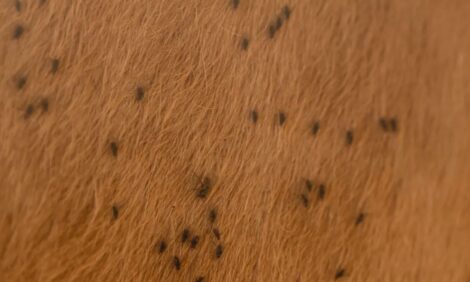



Some Tips for Spring Forage Management
By Doo-Hong Min and Rich Leep, Dept. of Crop and Soil Sciences, Dairy Review, Michigan State University Extension. Spring can be one of the busiest and most important seasons in terms of determining sustainable and profitable livestock production for the year.Following are some important tips for spring forage management for both hay and pasture production.
- Check the forage plants. It is important to determine if there was any winter injury to plants during the winter. If severe winter injury or killing of forage plants has occurred, it will be necessary to reseed or frost-seed into the existing vegetation. Otherwise, there will be serious weed invasions in the winter killed areas resulting in low forage yield and quality. When reseeding, it is important to remove the dead plant material to ensure optimal seed and soil contact for germination.
- Apply nitrogen fertilizer to grasses at green-up. Spring growth can amount to nearly two-thirds of forage production for the entire year. This necessitates timely application of nitrogen fertilizer to both hay and pastures at rates ranging from 50 to 75 lb N/acre. A common mistake in fertilizing forages in the spring is applying all of the nitrogen fertilizer in one spring application rather than utilizing split applications. A single spring application of nitrogen can result in nitrogen runoff, leaching or denitrification (nitrogen losses in anaerobic conditions such as under very wet or standing water situations). Apply nitrogen at the above rate to grass/legume mixtures only if legumes are less than 30% of the forage mix.
- Soil sample for soil nutrient analyses. Without knowing your current soil nutrient levels, it is impossible to expect decent forage yields or quality. Having an optimum soil pH ranging from 6 to 7 is critical for high yields and quality forages. If soil pH is not in this optimum range, fertilizers, including micro-nutrients, will not work properly. Alfalfa needs a higher soil pH (i.e., between 6.5 and 7.0) than other grasses and legumes.
- Start to graze when plant heights are two to four inches. If you have a rotational grazing system for your pasture, don’t wait until plant height is 8 inches to begin grazing. Start to graze when plant height is 2 to 4 inches. The rationalebehind this is that if you start to graze when plant height is 8 inches, plants being grazed in later paddocks will be over-mature resulting in poor quality and lower feed intake by livestock because of increased indigestible lignin in the plants. These poorly grazed pastures will also affect the following grazing cycles during the rest of the growing season.
- Save areas for emergency. It is difficult to predict the weather for the coming year. To reduce weather related risk, it is a wise practice to have a contingency plan. If you have a pasture or field available that may need renovating, it may be a good idea to plant summer annuals (i.e., brown mid-rib sorghum-sudan grass, forage brassicas, or millets) when the soil temperature becomes 60 to 65°F.



